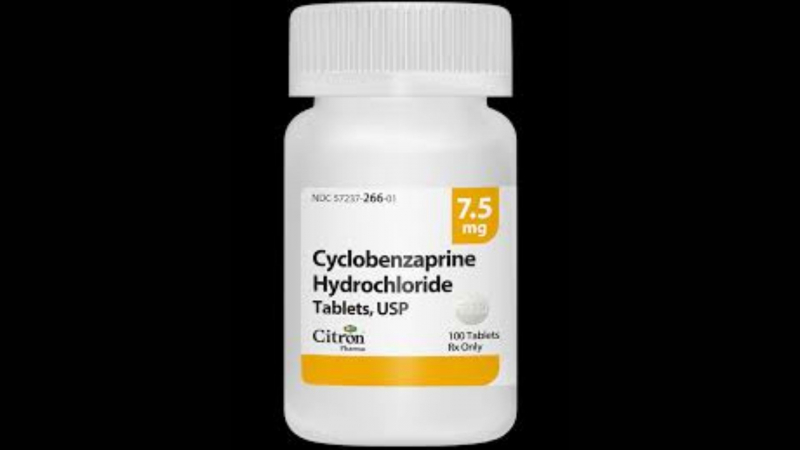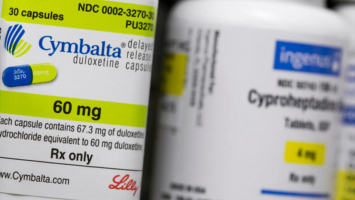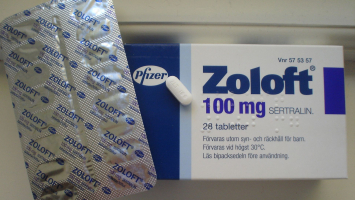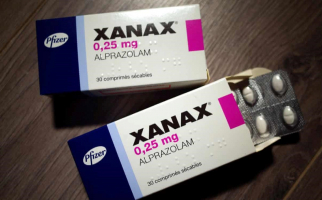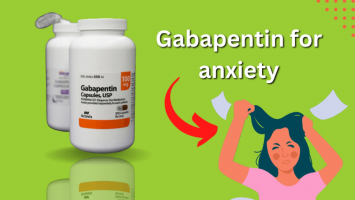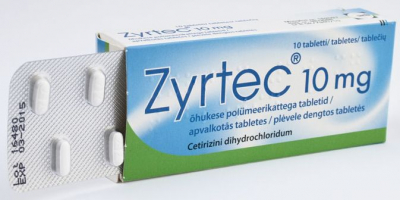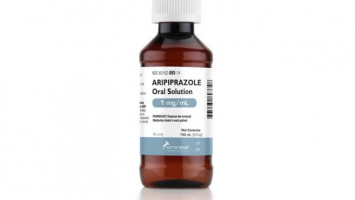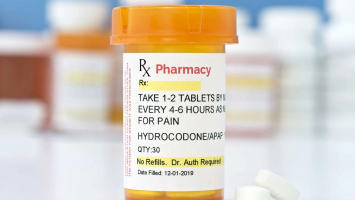Top 7 Things to Know About Cyclobenzaprine
Cyclobenzaprine belongs to the group of muscle relaxants, available in tablets or capsules, with the main ingredient being cyclobenzaprine hydrochloride. It is ... read more...used for a short time to treat muscle spasms, often in combination with rest and physical therapy. Cyclobenzaprine belongs to the group of muscle relaxants, available in tablets or capsules, with the main ingredient being cyclobenzaprine hydrochloride. It is used for a short time to treat muscle spasms, often in combination with rest and physical therapy. In this article, Toplist will provide you with the most necessary information about this drug.
-
Cyclobenzaprine can help with muscle spasms.
Cyclobenzaprine relaxes muscles by inhibiting hyperactivity in the gamma and alpha motor systems (these are nerve fibers that directly connect with skeletal muscle and are responsible for muscle contraction). Cyclobenzaprine acts primarily on the brain stem rather than the spinal cord, and it has no direct effect on skeletal muscle.
Cyclobenzaprine has no effect on muscle spasms caused by central nervous system (CNS) disease, such as cerebral palsy.
Cyclobenzaprine belongs to the muscle relaxant class of drugs.
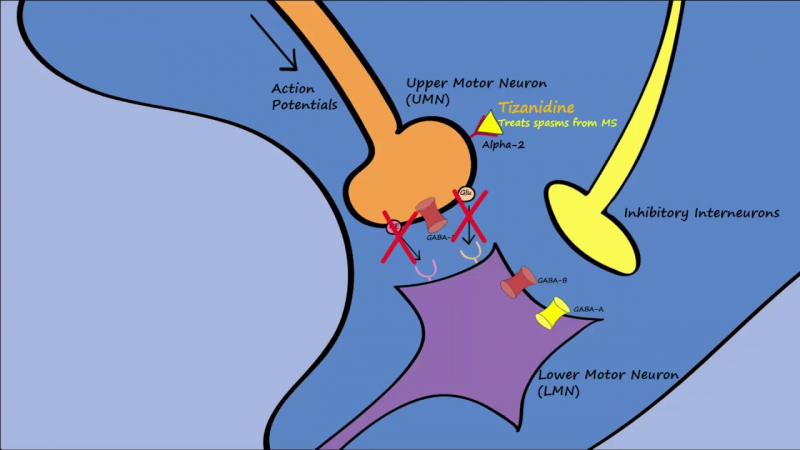
YouTube's PhysioPathoPharmaco Pharmacist Tips -
Muscle spasms caused by acute, painful musculoskeletal conditions are relieved.
Improves pain, tenderness, and range of motion associated with muscle spasms, as well as a person's ability to perform daily tasks.
Cyclobenzaprine is the most extensively researched skeletal muscle relaxant.
Reduces skeletal muscle spasm without impairing muscle function.
Cyclobenzaprine's sedative effects may help those suffering from insomnia caused by muscle spasms.
Long-lasting effects.
Although cyclobenzaprine has not been linked to addiction, abrupt discontinuation may cause symptoms such as nausea,
headache, and general discomfort. When discontinuing cyclobenzaprine, the dosage should be tapered off gradually.
Cyclobenzaprine generic is available.
Medical Videos 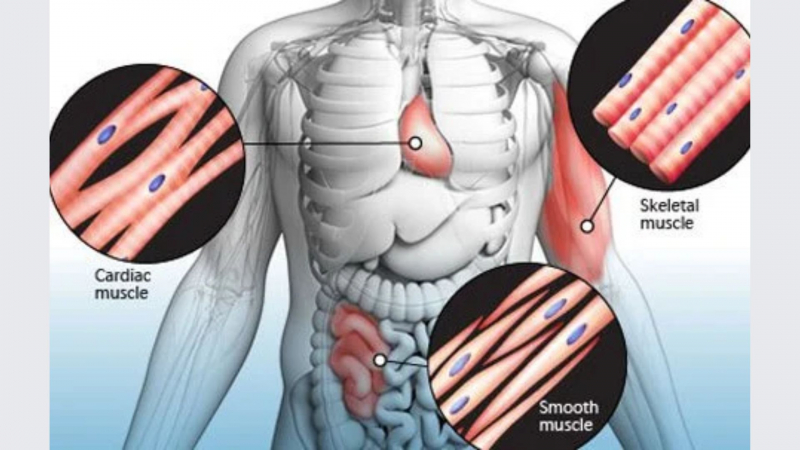
MedicineNet -
If you are between the ages of 18 and 60, do not take any other medications, and have no other medical conditions, you are more likely to experience the following side effects:
- Sedation. This is a serious side effect that can impair reaction time and make it difficult to drive or operate machinery. Stay away from alcohol.
- Dry mouth, fatigue, difficulty urinating, an increase in eye pressure, headache, dizziness, blurred vision, or nausea are also common side effects.
- Should only be used on a temporary basis (for periods of up to two to three weeks only)
- Muscle spasms caused by cerebral or spinal cord disease, or in children with cerebral palsy, are ineffective.
- Cyclobenzaprine should never be given within 14 days of antidepressants that inhibit monoamine oxidase (MAO), as the combination can be fatal.
- Serotonin syndrome may result from interactions with other medications that also boost serotonin (such as antidepressants, tramadol, St. John's Wort, and bupropion). The signs and symptoms include altered mental status (such as agitation, hallucinations, coma, and delirium), rapid heartbeat, flushing, numbness or rigidity in the muscles, and stomach discomfort (including nausea, vomiting, and diarrhea)
- Alcohol, other CNS depressants, and tricyclic antidepressants (such as amitriptyline and imipramine) may all have stronger effects or negative effects when used with cyclobenzaprine.
- People with arrhythmias, heart block or conduction issues, heart failure, hyperthyroidism, or those who have recently had a heart attack would not be a good candidate.
- In patients with mild liver illness, the recommended dosage of cyclobenzaprine should be decreased. People with mild to severe liver problems shouldn't take it.
- Cyclobenzaprine may not be appropriate for people with glaucoma or high intraocular pressure, a history of urinary retention, or who are taking other medications with anticholinergic side effects (anticholinergic side effects include constipation, blurred vision, and increase in eye pressure).
- Muscle spasms caused by brain injury or disease are ineffective.
- Seniors may be more sensitive to the effects of cyclobenzaprine, so the dosage should be kept low if the benefits outweigh the risks.
Seniors and children, people with certain medical conditions (such as liver or kidney problems, heart disease, diabetes, seizures), or people who take other medications are more likely to experience a broader range of side effects.
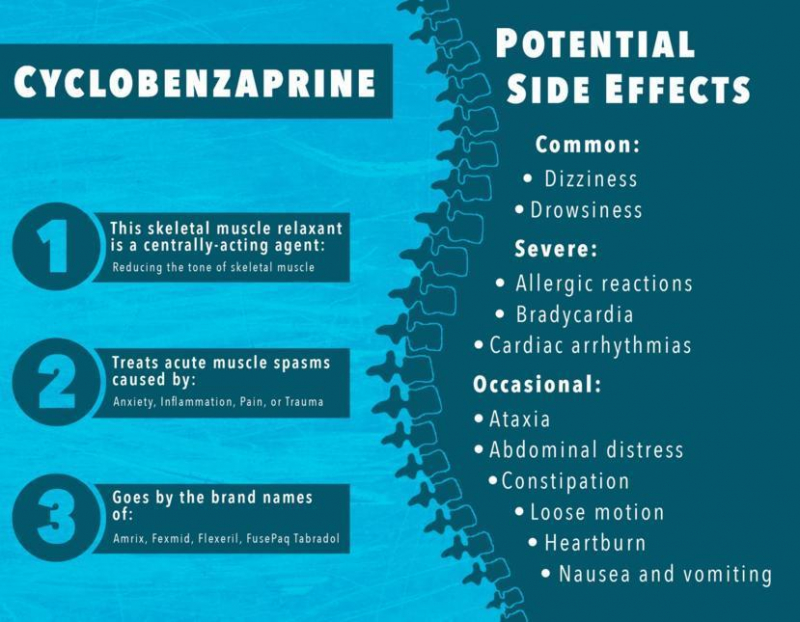
FindaTopDoc 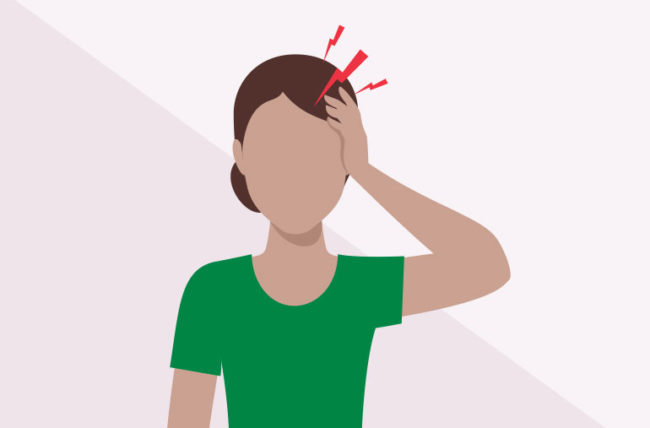
Cleveland Clinic Health Essentials -
You can take cyclobenzaprine with or without food.
It is recommended to take cyclobenzaprine in addition to rest and physical treatment.
Each person needs a different amount of cyclobenzaprine to be effective. Follow your doctor's instructions for taking cyclobenzaprine precisely. If you suffer any unsettling side effects or cyclobenzaprine is not working, consult your doctor.
Typically, cyclobenzaprine is generally administered for two to three weeks at most. When it's time to stop taking it, your doctor can suggest gradually reducing the dose.
You might feel tired or lose your judgment if you use cyclobenzaprine. While taking this medication, avoid operating machinery, operating a vehicle, or engaging in other activities that call for mental alertness.
While using this medication, avoid drinking. Cyclobenzaprine adverse effects may be exacerbated by alcohol.
Before taking any additional medications while taking cyclobenzaprine, consult your doctor or pharmacist. If you have any mental status changes (such agitation, hallucinations, coma, or delirium), a rapid heartbeat, dizziness, flushing, muscle tremor or rigidity, or gastrointestinal issues, call your doctor right once (including nausea, vomiting, and diarrhea).
Before beginning treatment, let your doctor know if you have a heart illness, thyroid disorder, liver disease, glaucoma, or an urinary issue.
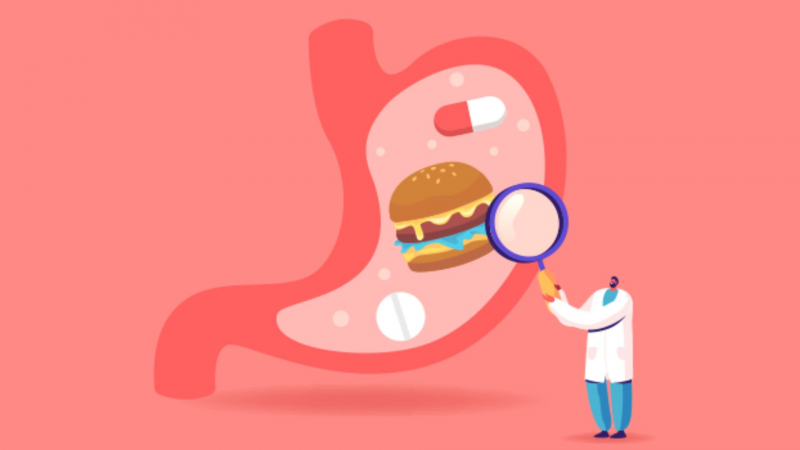
BuzzRx 
Baton Rouge Behavioral Hospital -
The time to peak cyclobenzaprine concentration varies depending on the formulation used (around 7 hours for the extended-release form). Some effects may be noticed in as little as 20 to 30 minutes. Immediate-release tablets have a half-life of four to six hours. Extended-release tablets have a 24-hour duration of action.
5mg of cyclobenzaprine is said to be as effective as 10mg, but with fewer side effects.
For muscle spasms caused by brain injury or disease, cyclobenzaprine is ineffective.
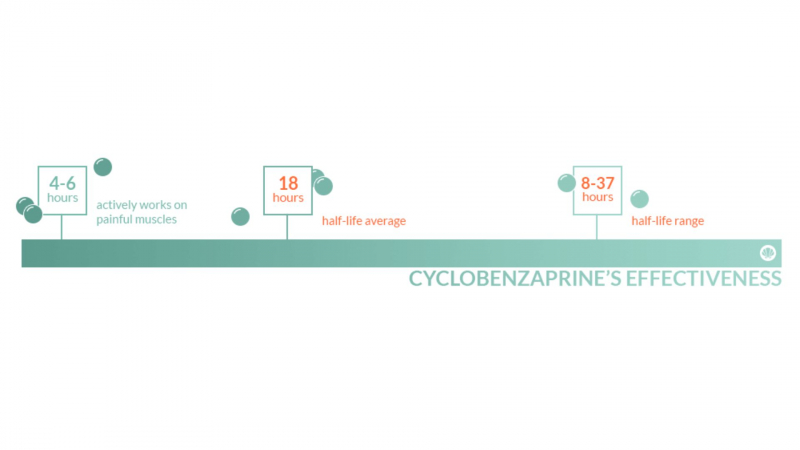
Laguna Treatment Hospital 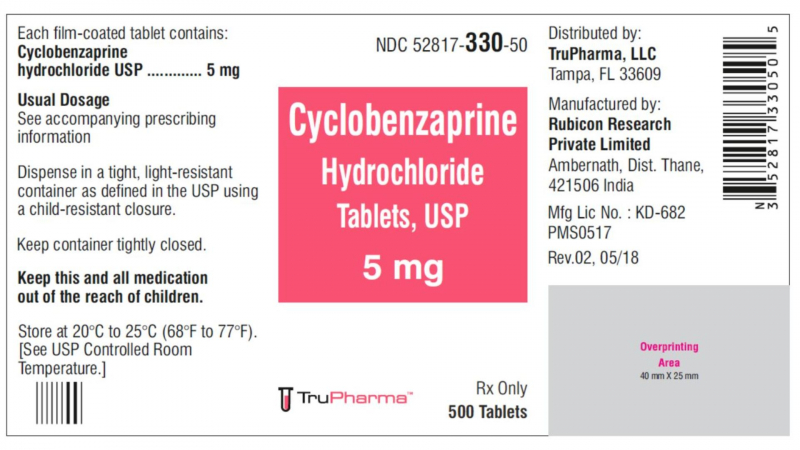
Merit Pharmaceutical -
When combined with cyclobenzaprine, medications that interact with the drug may lessen its effects, shorten their duration, exacerbate their severity, or have no effect at all. Even while it is not always necessary to cease taking one of the drugs, sometimes there is an interaction between two drugs. Consult your doctor to learn how to handle drug interactions.
The following common drugs may interact with cyclobenzaprine:
- anti-anxiety medications
- anticonvulsants
- antidepressants, such as amitriptyline, imipramine, nortriptyline
- antihistamines that cause sedation, such as diphenhydramine
- duloxetine
- monoamine oxidase inhibitors, such as selegiline, isocarboxazid, or phenelzine (interaction may be life-threatening)
- opioid analgesics such as oxycodone and morphine
- other muscle relaxants such as methocarbamol
- sleeping pills, such as zolpidem
- some chemotherapy treatments
- some medications used to treat mental illness, such as clozapine and thioridazine
- topiramate.
Alcohol may exacerbate the cyclobenzaprine's negative effects, such as sleepiness and vertigo.
Note that only commonly used drugs that may interact with cyclobenzaprine are included in this list, which is not exhaustive. For a comprehensive list of interactions, consult the cyclobenzaprine prescribing instructions.
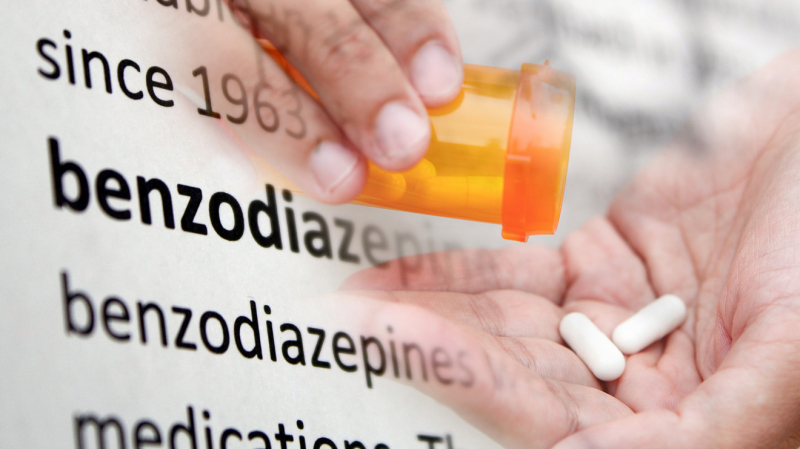
MarketWatch 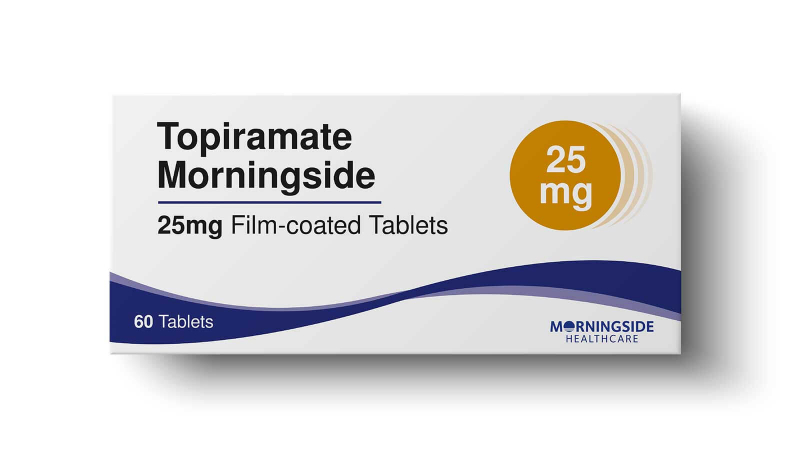
Morningside Pharmaceuticals









